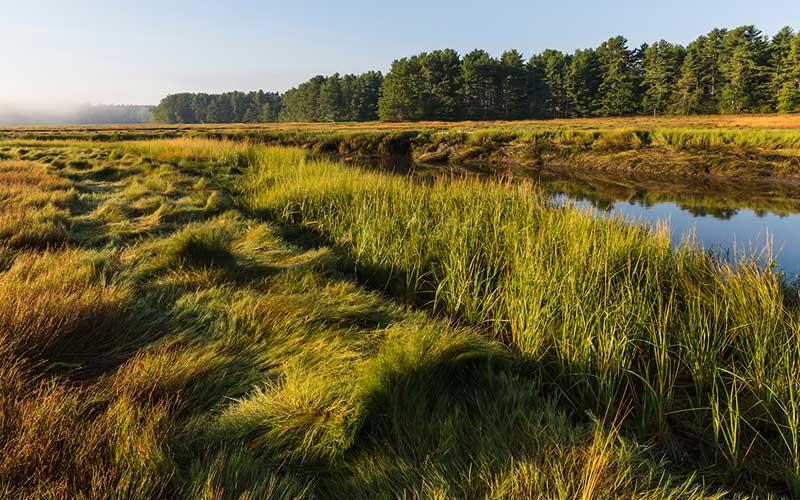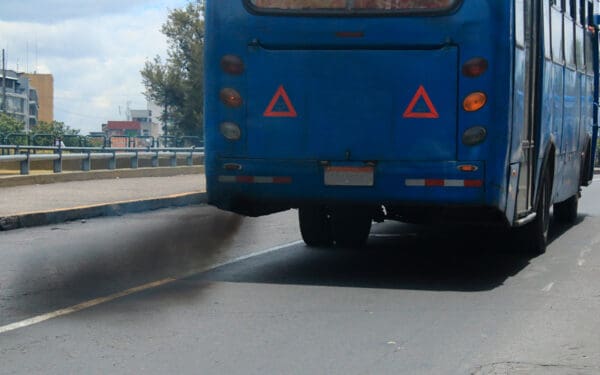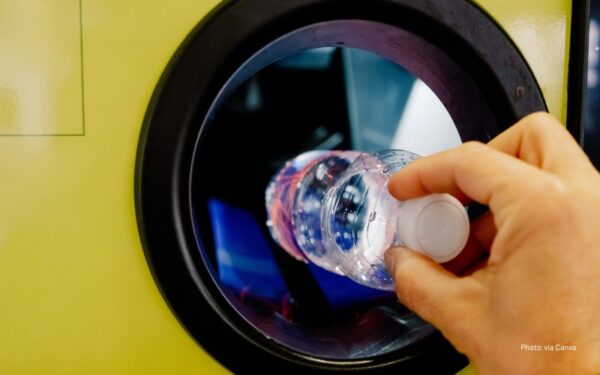
A salt marsh in Maine. Photo: EcoPhotography
As someone who grew up near the beach, fewer things make me happier than the drive up to the sandy shore and catching sight of estuaries and wetlands stretching out in all directions.
New England is home to many coastal habitats, including wetlands, salt marshes, and seagrass meadows. They are not just beautiful to look at, however. They also play a critical role in addressing the climate crisis. These types of habitats are known as “blue carbon ecosystems” because they store more carbon than land-based ecosystems. Unfortunately, these blue carbon ecosystems face degradation from development and construction, which makes climate change worse.
Here’s how CLF is pushing to better protect New England’s blue carbon ecosystems.
Why Are Nature-based Solutions So Crucial?
Nature-based solutions protect, manage, and restore ecosystems in ways that benefit people, our economy, and our environment. When it comes to climate change, such solutions could help us reach 30% of the emissions reductions needed to avert the worst fallout of the crisis.
Blue carbon ecosystems like wetlands and seagrass meadows are especially critical because they absorb and store carbon. They also enhance water quality, support fisheries, control pollution, and improve our resilience to storms and flooding.
However, human development has led to the significant decline of these habitats worldwide and that makes climate change worse. For example, mangroves are being lost at a rate of 2% per year, but they account for up to 10% of climate-damaging emissions from deforestation globally.
We must reverse this trend and make sure our coastal habitats work for us, not against us.
Massachusetts Had a Chance to Get Nature-Based Solutions Right in Its Climate Action Plan
Here in Massachusetts, state leaders addressed the importance of protecting coastal ecosystems in its newly released Clean Energy and Climate Change Plan (“Climate Plan”) for 2025 and 2030.
CLF participated actively in the working groups leading up to the release of the Climate Plan for 2025 and 2030. We pushed for the state to:
- Strengthen wetland protection by implementing a no-net loss provision that ensures any loss in wetland carbon storage is balanced by conserving and restoring existing wetlands and adjacent land and creating new ones.
- Ensure that all people be protected from environmental hazards and enjoy a clean and healthful environment by adopting language similar to that used in a proposed federal bill, the Blue Carbon Protection Act. That 2021 bill affirms that wetlands should serve as buffers against storm surges, “especially for communities of color, low-income communities, and Tribal and Indigenous communities.”
The final Climate Plan for 2025 and 2030 incorporated some but not all priorities.
The Commonwealth’s Plan Ultimately Fell Short
The final Climate Plan set goals for how the Commonwealth will cut its emissions by 2025 and 2030. Among many strategies, the plan committed Massachusetts to protecting 28% of undeveloped land and water – including wetlands – by 2025 and 30% by 2030. While in line with the federal policy to protect 30% of land and water by 2030, Massachusetts has already protected 27% of undeveloped land and water, so the Commonwealth should have set a more ambitious goal for the end of the decade.
The Commonwealth also included CLF’s recommendation of a “no net-loss policy” to avoid reducing wetlands’ carbon storage capacity throughout Massachusetts by 2030, though it did not include a commitment to create new wetlands. In addition, the Commonwealth committed to analyzing how much carbon natural and working lands are storing versus releasing, which will help monitor whether the no net-loss policy is accurately met.
While the plan incorporated environmental justice, it could have done so much more strongly by requiring consultations with environmental justice populations before approving development near natural and working lands and committing to preserving mature trees within these communities. The Commonwealth also failed to include the critical role wetlands play as storm surge buffers for communities of color and low-income communities. This is disappointing because environmental justice populations are disproportionately burdened by the effects of climate change.
While the Commonwealth included an overall strategy of protecting, managing, and restoring natural and working lands, the plan lacked tangible, concrete actions that will be undertaken to achieve the goals.
Restoring Nature Is One of Our Best Tools to Tackle Climate Change
Protecting and restoring blue carbon ecosystems is vital in addressing climate change. When vibrant and healthy, they work like a sponge and store carbon. When destroyed or degraded, they release carbon, worsening the climate crisis.
What’s more, wetlands and other coastal habitats also help protect us against floods and erosion. They provide a home to wildlife and aquatic species and offer endless opportunities for recreation and education.
The Commonwealth has an obligation to ensure that its goal of protecting natural and working lands is ambitious enough to comply with its climate mandates. Such solutions should complement strategies to cut emissions from our energy, building, and transportation sectors. They should also benefit environmental justice populations already overburdened by climate change.
Restoring nature is one of the best tools we have for tackling the climate crisis. That means we all have a stake in protecting our wetlands and coastal ecosystems. CLF is committed to pushing for ambitious solutions to slash carbon pollution in Massachusetts and across New England and advocating for targeted resources for environmental justice populations. We will be at the table to hold our state leaders accountable for their emissions mandates and for their obligation to create a brighter future for us all. As for me, I will continue to appreciate coastal ecosystems, not only for their beauty but for their ability to help protect us against the climate crisis.



